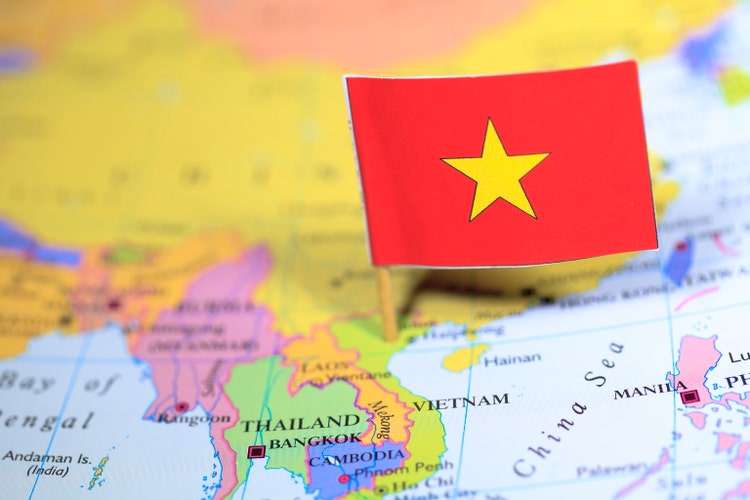[ad_1]
pawel.gaul/iStock via Getty Images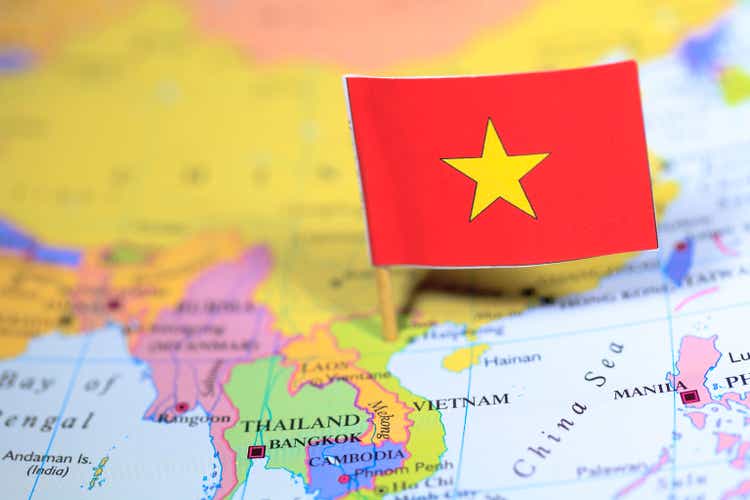
(This article was co-produced with Hoya Capital Real Estate)
Introduction
I am of the age where I had to register for the Vietnam War and get my draft number. The peace treaty was signed before I graduated from high school, so I avoided getting drafted. Two years later, Saigon was conquered and renamed in honor of Ho Chi Minh, the North Vietnamese leader dating back to WWII. As a committed communist, one has to wonder what he thinks of having a capitalist stock exchange in the city name after him?
How things change! The MSCI Vietnam Index was launched on Dec 18, 2007, and they became part of the larger MSCI Frontier Index at the same time. Frontier countries are the ones with active markets but don’t meet MSCI’s requirements to be classified as Emerging. Currently, there are 21 countries in the Frontier Markets Index, four of which are in Asia. Vietnam is the only one in Far East Asia.
A look at Vietnam
Vietnam, or the Socialist Republic of Vietnam, is located at the eastern edge of mainland Southeast Asia, was formally established after the end of the Vietnam War. It covers 128,000 square miles; with a population of over 96 million, making it is the world’s 15th most populous country. Its capital is Hanoi and its largest city is Ho Chi Minh City.
Based on Purchasing Power Parity, or PPP, Vietnam ranks 116 in the world, just behind Jamaica and ahead of the Philippines. This is up from 130th ten years ago. On the economic freedom scale, while their score is improving, Vietnam ranks 62nd, the same as Russia and Belarus. I included that to mention the special risks when investing in a Communist country with a heavily controlled economy.
Some vital economic forecasts from the International Monetary Fund are:
theglobaleconomy.com Vietnam
With a projected GDP growth rate in 2026 is 6.94%, Vietnam ranks third in the world for that year. The world average for 2026 is 3.38%. Vietnam’s average growth rate from 1980-2026 is projected to be 6.37%.
theglobaleconomy.com Vietnam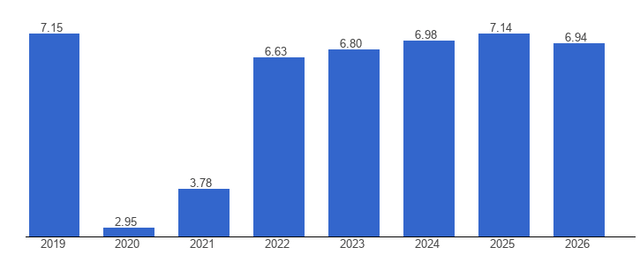
The Investment forecast (32.21%) places them 24th on the list. Their 4% inflation rate is about double what is forecasted for the United States.
theglobaleconomy.com Vietnam
Based on exports and imports, they are 4X their world GDP weight, and slightly below their percent of the world’s population.
One reason some analysts like Vietnam, as it could be a manufacturing diversification option away from China. Secondly, as the cost of doing business reduces the reason for being in China, Vietnam’s lower cost gains attractiveness.
gpminstitute.com/publications-resources/Global-Payroll-Magazine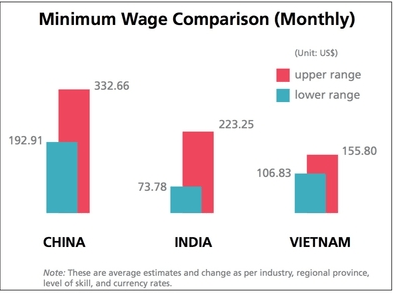
Due to their size, China or India, volume and resource wise, have advantages over Vietnam, but wages currently favor the later. Even compared to their closest neighbors, Cambodia and Thailand, Vietnam’s labor costs are lower. Whether productivity offsets any of these comparisons, I could not find data to answer that question.
Exploring the VanEck Vectors Vietnam ETF
Seeking Alpha describes this ETF as:
VanEck Vectors Vietnam ETF is an exchange traded fund launched and managed by Van Eck Associates Corporation. It invests in public equity markets of Vietnam. It invests in stocks of companies operating across diversified sectors. The fund invests in growth and value stocks of companies across diversified market capitalization. The fund seeks to track the performance of the MVIS Vietnam Index. VNM started in 2009.
Source: seekingalpha.com VNM
VNM has $543m in assets and provides investors with a minimal yield of .52%. VanEck charges 61bps in fees; very common for Frontier Market funds.
Examining the Index
An initial due diligence step for any fund that invests based on an index is understanding that index. The VNM ETF uses the MVIS Vietnam Index, which the provider, MV Index Solutions, describes as:
The MVIS Vietnam Index (MVVNM) tracks the performance of the largest and most liquid companies incorporated in Vietnam. The index also includes non-local companies incorporated outside Vietnam that generate at least 50% of their revenues in Vietnam. MVVNM covers at least 90% of the investable universe.
Source: mvis-indices.com Vietnam
Some of the inclusion/construction rules for the Index are:
- The Index includes 50 companies, 14 of which qualify based on the 50% revenue rule.
- Market-cap of at least $150m USD.
- At least 250,000 shares traded per month over the last six months at a review and also at the previous two reviews. There are quarterly reviews.
- Company weightings are capped at 8%.
- Special selection rules come into play if other qualifications drop the Index components below 25 stocks.
The current country make-up of the Index is next; so currently about 20% of the weight comprises stocks not headquartered in Vietnam.
mvis-indices.com/indices/country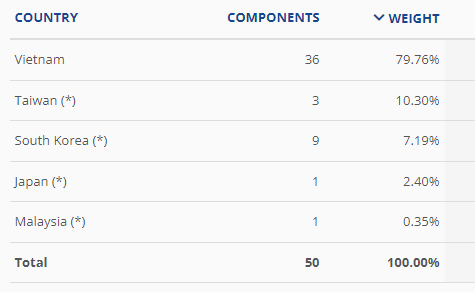
Because the Index allows non-Vietnamese companies to be included, they provide two weighting charts that show sector allocations. Notice 100% of three sectors are non-home companies, including the Tech sector.
mvis-indices.com/indices/sectors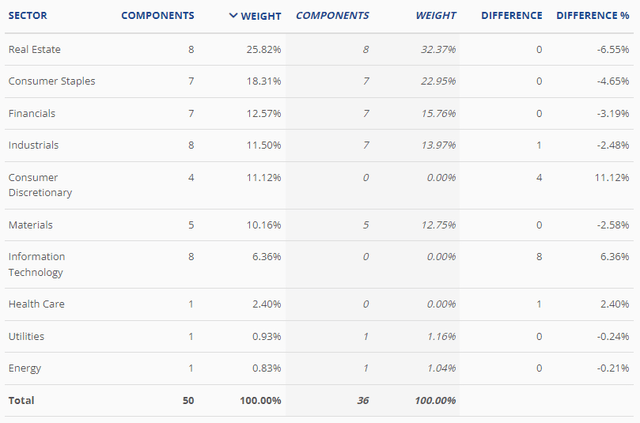
VNM Holdings review
mvis-indices.com Vietnam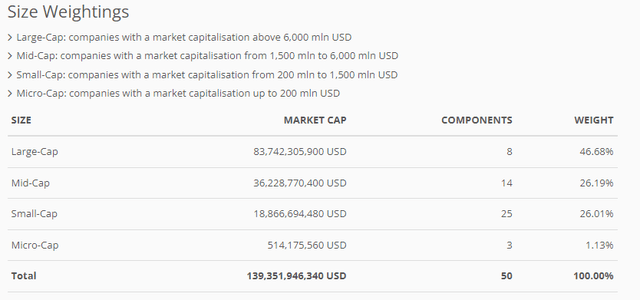
I suspect that most of the larger companies held are non-home stocks. Index-based funds are given permissions to “drift” from the Index. The most common allowance is 20% outside the index or away from its sector weightings. The above data wasn’t dated, so some of the weight differences could be due to sources not matching date-wise.
vaneck.com VNM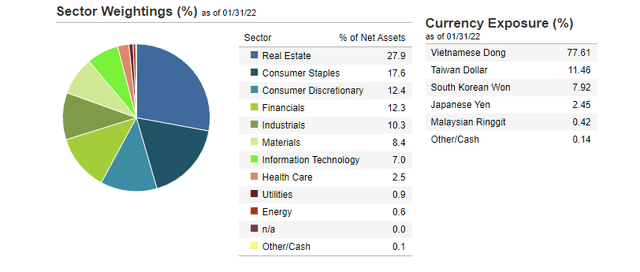
There is currency exposure to owning this ETF, as shown in the right-side table above, mostly against the Vietnamese Dong and then the Taiwan Dollar. In reviewing the ETF’s documents, I did not see anything that indicated the ETF tries to hedge any of their currency exposure.
Top Holdings
vaneck.com; compiled by Author
The Top 10 comprise 55% of the assets; the Top, 20 75%. As with other VanEck ETFs, VNM is allowed to participate in security lending. Based on the Index rules, some of the top holding, Vinhomes, might need to be sold as it is above the 8% cap. At the end of the year, about 2% of the assets were being lent out, with VNM earning an average of 1.44% on that activity.
I found some descriptions of the Top 5 holdings.
Vinhomes is the No.1 real estate development and management company in Vietnam, recognized for its superior scale, execution speed and service quality, leading the market to sustainable growth, with the vision of becoming a world-class enterprise.
Mason Group is a holding company with controlling economic interests in The CrownX, Masan MEATLife (“MML”) and Masan High-Tech Materials (“MSR”), representing an economic interest of 84.93%, 78.74% and 86.39% respectively, as of 30 June 2021. The CrownX is Masan’s integrated consumer retail arm that consolidates its interests in Masan Consumer Holdings and VCM Services and Trading Development JSC.
Hoa Phat is the leading industrial manufacturing group in Vietnam. Currently, the Group operates in 05 sectors: Iron and steel (construction steel, hot rolled coil) – Steel products (including steel pipes, galvanized steel, drawn steel wire, prestressed steel) – Agriculture – Real estate – Home appliances. Steel production is the core, accounting for 90% revenue and profit of the Group.
Vingroup continues to pioneer and lead consumer trends in each of its businesses introducing Vietnamese consumers to a brand new, modern life-style with international-standard products and services. Vingroup has created a respected, well-recognized Vietnamese brand and is proud to be one of the nation’s leading private enterprises. They have three strategies: Technology & Industry, Trade & Services, and Social Enterprise.
Vietnam Dairy Products JSC is a Vietnam-based company engaged in the food processing industry, specifically, the dairy industry. It is involved in the manufacturing, marketing, wholesale trading, and retailing.
VNM Distribution review
seekingalpha.com DVDs
Year-end is the norm for payout, sometimes with a little extra, but overall investors will need to look for price appreciation to get any meaningful return from this ETF.
Portfolio strategy
If an investor was trying to be GDP-weighted (.25%) in their equity allocation, the VanEck Vectors Vietnam ETF is the only ETF I am aware of that is single-focused on this country. There is a second ETF investors can consider that has a 30% exposure to Vietnam. It is the iShares MSCI Frontier and Select EM ETF (FM), which I reviewed recently here.
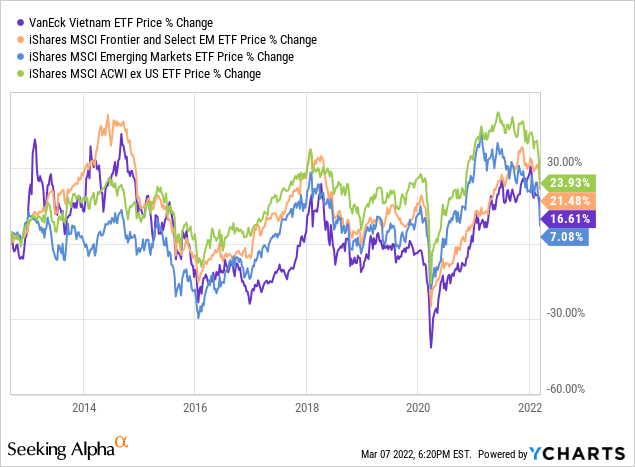
Since 2012, the VNM ETF has trailed these representative international ETFs. The next chart shows performance over set periods, along with tier StdDevs, which VNM has the highest.
www.portfoliovisualizer.com
While the current world events make any investment more dangerous, if the experts are correct, Vietnam should do well, but its performance only rates a Hold at this time.
[ad_2]
Source links Google News

